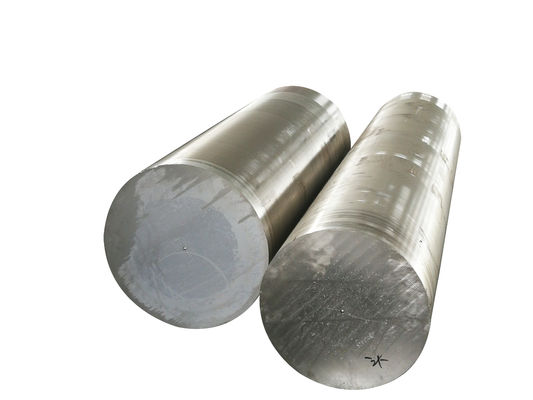-
Magnesium Sacrificial Anodes
-
Magnesium Anodes Cathodic Protection
-
High Potential Magnesium Anode
-
Magnesium Ribbon Anode
-
Extruded Magnesium Anodes
-
Prepackaged Magnesium Anode
-
Water Heater Magnesium Anode
-
Wrought Magnesium Alloy
-
Magnesium Alloy Bar
-
High Strength Magnesium Alloy
-
Magnesium Alloy Sheet
-
Dissolvable Magnesium Alloy
-
Magnesium Rare Earth Alloy
-
 FedererReliable quality of sacrificial magnesium anode.
FedererReliable quality of sacrificial magnesium anode. -
 AliceWell suited to our cathodic protection needs.
AliceWell suited to our cathodic protection needs.
High Strength Az31 Magnesium Alloy Magnesium Rod For UAV Parts
| Place of Origin | CHINA |
|---|---|
| Certification | USA: G97,ASTM |
| Minimum Order Quantity | 1000KGS |
| Price | Negotiable |
| Packaging Details | Pallet packing, or on customer's request |
| Delivery Time | 30 Days after receiving the deposit |
| Payment Terms | 50% Deposit , 50% Balance before deliver to the port |
| Supply Ability | 500 mts per month |

Contact me for free samples and coupons.
Whatsapp:0086 18588475571
Wechat: 0086 18588475571
Skype: sales10@aixton.com
If you have any concern, we provide 24-hour online help.
x| Keywords | Magnesium Alloy Bar | Adventage | More Diverse Mechanical Properties |
|---|---|---|---|
| Forming Process | Extrusion Process | Technical Standard | GB/T 17731-2015 |
| Application | UAV Structural Parts | Feature | Low Density High Strength |
| High Light | High Strength Az31 Magnesium Alloy,Az31 Magnesium Rod,Magnesium Rod For UAV Parts |
||
Good Shock Absorption High Strength Magnesium Alloy Bar For UAV Structural Parts
Introduction:
Magnesium alloys are alloys based on magnesium and other elements. Its characteristics are: low density (about 1.8g/cm3), high strength, large elastic modulus, good heat dissipation, good shock absorption, larger impact load capacity than aluminum alloy, and good corrosion resistance to organic substances and alkalis. The main alloying elements are aluminum, zinc, manganese, cerium, thorium and a small amount of zirconium or cadmium.
Magnesium alloy has the characteristics of low density, high specific strength and specific stiffness, good dimensional stability, good thermal conductivity and electrical conductivity, vibration absorption and easy processing and forming, so magnesium alloy is one of the competitive lightweight materials.
Features:
Low density, good specific performance, good shock absorption performance, good electrical and thermal conductivity, good process performance, poor corrosion resistance, easy to oxidize and burn, and poor heat resistance.
Its processing technology, corrosion and mechanical properties have many characteristics: fast heat dissipation, light weight, good rigidity, certain corrosion resistance and dimensional stability, impact resistance, wear resistance, good attenuation performance, easy to recycle; in addition, it also has High thermal conductivity and electrical conductivity, non-magnetic, good shielding, non-toxic and so on.
Processing performance advantage:
1. The melting cost is only 2/3 of that of aluminum:
2. Excellent die-casting formability: magnesium alloy can be die-casting to manufacture complex parts and ultra-thin shell parts, the thinnest can reach 0.45mm (ABS plastic is 1.2-2mm, aluminum alloy is 1.5-2mm), and the surface quality of magnesium castings and The appearance is obviously better than that of aluminum: the affinity of magnesium die castings and molds is much lower than that of aluminum, and the life of molds is more than 2 times that of aluminum.
3. The production efficiency of die casting is 25% higher than that of aluminum, the metal mold casting is 300-500K higher than that of aluminum, and the lost foam casting is 200% higher than that of aluminum.
4. Good cutting performance: magnesium alloy has low hardness and good cutting performance. The cutting resistance is only 56% of aluminum alloy and 43% of brass. High cutting speed and cheap cutting can be used during processing. Cutting tools, low tool consumption. And without grinding and polishing, you can get a very smooth surface with cutting fluid.
Application:
Structural parts with magnesium alloy as the base material are mainly used in special environments with strict requirements on the strength of structural parts, light equipment weight (the design weight is smaller than that of aluminum alloy), high electromagnetic shielding requirements, shock absorption, compression resistance and impact resistance. . Such as: aerospace parts, aerospace electronic equipment structural parts, UAV structural parts, reinforced computer structural parts, medical equipment structural parts, communication equipment structural parts, heat sinks, shielding boxes, electronic disks, thermal conductive plates, cameras, GPS positioning equipment, Radar receiving equipment, various types of handles, control panels, switches, etc.
Photos:
![]()







